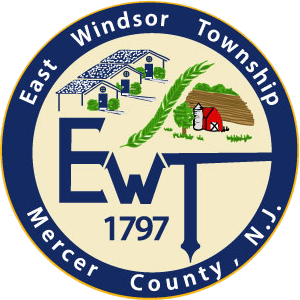Stormwater Management and Pollution Control
Why Stormwater Management?
Stormwater management is the process of controlling the negative impacts to stormwater runoff resulting from land use changes, and most frequently those caused by land development. A significant contributor to poor water quality and flooding is inadequate management of polluted stormwater runoff. The goal of the municipal stormwater ordinance is to protect and improve water quality while mitigating flooding for public health, safety and welfare of the community.
Human activities are largely responsible for the pollution found in our stormwater runoff. The EPA has cited urban stormwater as the largest contributor of pollutants to our waterways. Everything that we put on the ground or into the storm drain can end up in our streams and ponds. Each of us has a responsibility to make sure contaminants stay out of our waters. Be the solution to runoff pollution.
The State’s official definition of stormwater under the N.J.A.C. 7:14A rules is as follows:
'Stormwater' means water resulting from precipitation (including rain and snow) that runs off the land's surface, is transmitted to the subsurface, or is captured by separate storm sewers or other sewage or drainage facilities, or conveyed by snow removal equipment.
The following are steps East Windsor Township has taken since the State of New Jersey adopted the Stormwater Management rules, N.J.A.C. 7:8:
Stormwater Documents:
- Stormwater Pollution Prevention Plan (SPPP) – in process
- Municipal Stormwater Management Plan (MSWMP) adopted 2005;
- Stormwater Outfall Map completed August 1, 2006 – in process of being updated
Also referred to as the Stormwater Control Ordinance (SCO), Chapter 22 Major developments are required to design their projects to address stormwater impacts due to the quantity of stormwater produced, the quality of the stormwater runoff and must provide for groundwater recharge equal to predevelopment recharge. Green Infrastructure Best Management Practices (“GI BMPs”) and nonstructural stormwater management strategies like low impact development (LID) shall be utilized to meet the goal of maintaining natural hydrology to reduce stormwater runoff volume, reduce erosion, encourage infiltration and groundwater recharge, as well as reduce pollution. GI BMPs and LID are to be developed based upon the physical site conditions and the origin, nature and the anticipated amount of potential pollutants. Multiple stormwater management BMPs may be necessary on a project to achieve the established performance standards for water quality, quantity, and groundwater recharge. These requirements are reviewed by Township Land Use boards at the time of each development’s application to insure adequate stormwater management features are provided. These features can include bioretention basins, infiltration basins, dry wells, rain gardens, water quality swales, porous pavement (concrete or asphalt) and any other features which has been installed for stormwater management purposes.
After a project’s approval and construction, these facilities must be maintained to prevent additional runoff and flooding of neighboring properties. Each project must identify a person who is responsible for maintenance of private stormwater management facilities. The person responsible for maintenance also has to evaluate how effective the maintenance plan is at least once per year, and adjust the plan, as needed. Records of routine maintenance activities and costs shall be kept to demonstrate compliance with the approved stormwater management facility maintenance plan, as per these local ordinances and also New Jersey Department of Environmental Protection regulations.
Stormwater Coordinator Contact
For more information and questions on the Township’s Stormwater Program please contact:
James Brady,
Township Manager
East Windsor Township
16 Lanning Boulevard
East Windsor, NJ 08520
Telephone: (609) 443-4000 ext. 246
Educational Links
- Stormwater Best Management Practices Manual
- Rutgers Cooperative Research & Extension
- NJ Green Infrastructure
- Clean Water NJ
- NJ Stormwater
Stormwater Education Brochures & Handouts
- Litter Flier
- Pet Waste Flier
- Lawn Fertilizers Flier
- Car Wash Flier
- Oil Spill Flier
- Stormwater Pollution Fact Sheet
Additional Files
